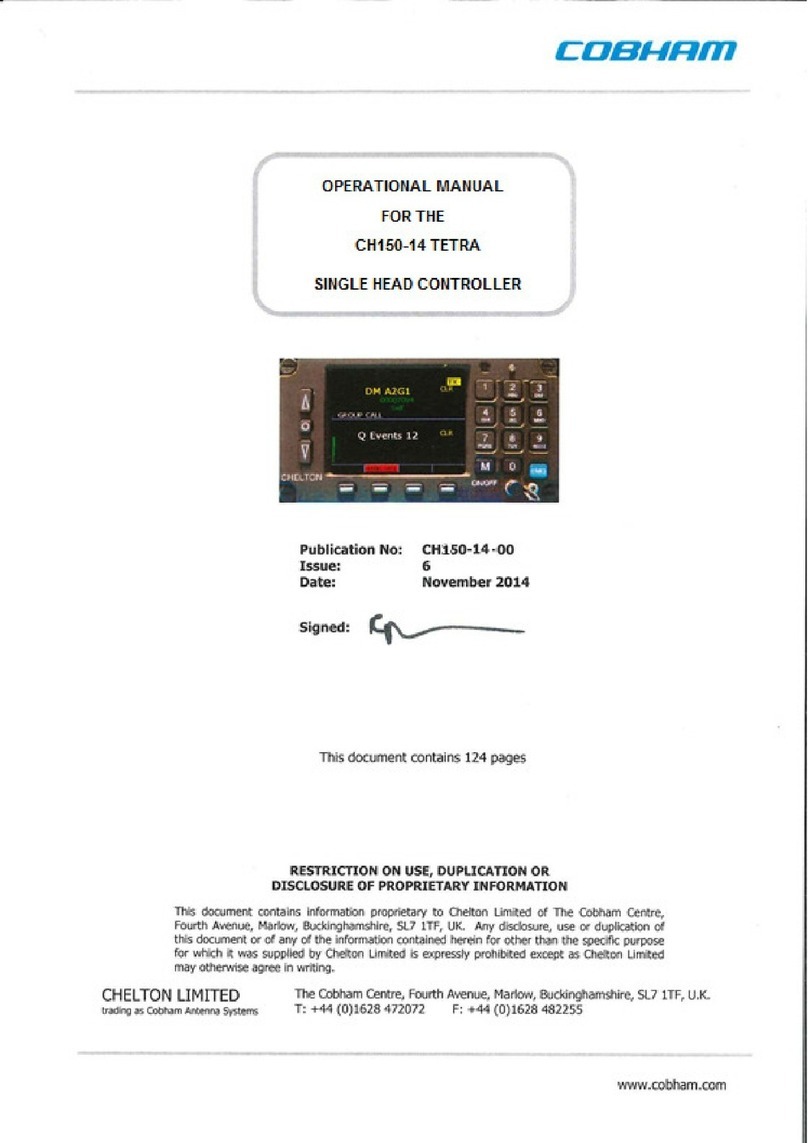
DACS Digital Audio Control System
Operators Manual
Rev: 1.00 Page 1
DACS_813-0100
CONFIDENTIAL AND PROPRIETARY TO COBHAM
1 Introduction
Information in this manual consists of the functional and operational procedures for the
COBHAM Digital Audio Control System (DACS).
2 System Information
DACS is a communications management system that distributes and controls all the
audio in an aircraft. This overview provides a basic understanding of how the system
functions.
CAUTION:
It is important that you confirm the specific criteria associated
with this installation with your installing agency.
At installation, a computer using COBHAM Device Configuration Software (DevCS) is
used to program specific user criteria for the required communications setup. The
number of radios, number and type of users, headset impedances, VOX control for the
passengers and numerous other options are defined at this time.
The Audio Management Unit (AMU) manages the audio to and from all transceivers,
receivers and audio warning sources; enables the transmission of microphone audio to
a selected transmitter and distributes all Inter-Communication System (ICS) audio.
The Audio Control Panel (ACP) is the operator interface which can be any
combination of up to six ACP53s.
The Remote Memory (RM) connects to the AMU and stores the system's
configuration and aural alert files remotely. This allows replacement of the AMU
without the necessity of reconfiguring the replacement unit.
An optional Passenger Intercom Amplifier (PIA) is available to allow up to twelve
additional passengers to be connected to the system.
The AMU, RM and PIA have no direct operator interface and information on these units
is available in their applicable Service Manual.
The following figure illustrates a typical DACS system hardware configuration however it
will vary depending on the specific criteria required.
These commodities, technology or software are controlled in accordance with the United States Export Administration Regulations, Export Classification
Control Number(ECCN) 7E994. When exporting, diversion contrary to U.S. law is prohibited.




























